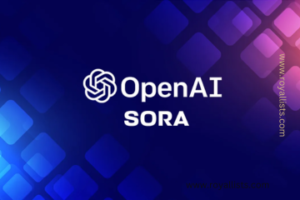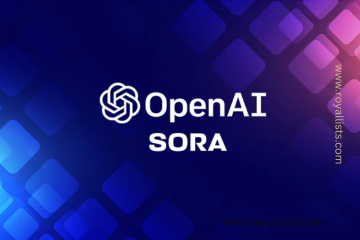What is OpenAI’s Sora? A Revolutionary Step towards Text-based Natural Video Synthesis. There are many exciting applications of Artificial intelligence across various fields, and one of the latest technologies to hit the shelves is Sora proposed by OpenAI which is an optimal text-to-video generation model. Sora has turned out to be an interface that users can use to create videos from texts provided to the application. As with DALL-E that can turn text into images, Sora ‘animates’ inputs and generates videos that can not exceed 60 seconds long. As it stands now, now is still in its developmental stage but it is far from limiting itself to becoming a tool that will be a strong fit for creative industries and video production, as well as clients in the general public.
How Does Sora Work?
Fundamentally though, Sora employs diffusion transformer model and it creates videos through progressive construction from noise to a complete visual sequence. In contrast to previously suggested models where videos are created frame by frame, Sora is able to create videos in real time by taking into account present frames as well as frames yet to be generated. This way the model ensures proper synchronization of motion of the objects used in the video, angle and light of the scene used throughout the video. This is achieved by partitioning each frame to unit spacetime patches. Each is annotated both for spatial appearances as well as sequential progression. This format enables Sora to run almost any sort of video, from the short one or two-minute video to widescreen cinematic shots.
To this end, the model possesses a dual-structure; the diffusion model, which is the best design for capturing low-level texture details; the transformer network that has the capacity to handle the full layout of the video. This combination helps to retain the cohesiveness of the visual output, but at the same time explains the specifics behind the video sequence created for Sora.
Features of Sora

Sora is not a tool that merely generates videos ~ it includes a vast capacity of features. Some of the standout features include:
Text-to-Video Conversion: The basic functionality of Sora is to create a video from any description in text format. For instance, a user could give a description of a city full of life, or a relatively quiet beach, and Sora would prompt the corresponding video.
Video Editing: Sora can also revise the existing videos and put effects, changing background and changing Articles of the footage. As such, aAE uses video production with minimal need of normal video editing software into useful arena.
Seamless Loop Creation: For scenarios that require an infinite amount of visual imagery, for example, background animations or any element of a site, Sora can loop any fragment of video .
Interpolation Between Clips: Sora has something that no other quick remind application has, the option of turning two totally unrelated clips into one.
Extending Clips in Time: Some of the possibilities with the Sora app include the abilities to make a video recognizable forward or backward in time helping the creation of an extended version of a scene without having to reshoot and re-edit a scene.
Proxemics and Use of Sora in Video Production
Sora is yet a product in testing, but it is clear that it is going to be a revolutionary universal tool for making videos. That it can produce professional like videos directly from text descriptions makes it allows for quicker, easier video creation. Specifically, it will be useful for filmmakers and advertisers, and even educators, who can quickly create visual material in a media with limited need for an elaborate production or expensive video equipment.
As with any advanced new service, creative professionals have started experimenting with usage scenarios of Sora already in filmmaking, animation, and marketing. For instance, Sora can be applied for creating pre-production at filmmaking before the actual shooting, or designing individual video ads for digital marketing according to definite product descriptions.
Limitations and Challenges
Sora has had great interest created for it but it has its set disadvantages that have been discussed above. The model, like many AI systems out in the world, can have issues with understanding the real physics of the world and cause / effect relationships. This can range anywhere from a character biting into what looks like a cookie in one demo yet the cookie is perfectly made in the next. Further, Sora tends to display delayed inappropriate development in spatial localization, for example, she failed to mimic basic objects exchange of sides or directions.
There are also concerns in manipulation of text-to-video models for generative, for example prosaic fakes of deep fakes. While developing its algorithm, OpenAI placed certain restrictions on the kind of texts users can produce: no obscenities or other wrongdoing can be generated, but critics are still uneasy about the potential of misuse of the tool.
The Future of Sora
Sora is still in the early stages of its open beta, and users’ access is restricted to designers, artists, and AI scientists who can make a request for an invitation. Although a public release date has not been provided, this model has a wide range of possibilities. Ranging from creating realistic artificial environments for video games, to coming up with content for the still emerging part of the metaverse, Sora might be one of the cornerstone companies in the future of visual content production.
Also Read: How to Add Custom GPTs to Any Website
Conclusion
What is OpenAI’s Sora? A Revolutionary Step towards Text-based Natural Video Synthesis. Sora in OpenAI is one of the most promising and interesting developments in the sphere of AI-created text. When using text to create videos, it helps users be able to showcase and create their concept in a creative way. Despite the fact that Sora is a relatively young market player, it is possible to talk about it creating a new industry and radically changing traditional industries like entertainment, education, and marketing.

